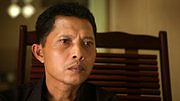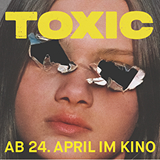
Neue Notiz
The Look of Silence
Joshua Oppenheimer’s spectacular documentary THE ACT OF KILLING showed the perpetrators of the Indonesian “anti-communist” 1960s massacres boasting about their crimes. THE LOOK OF SILENCE documents the deafening silence in Indonesian society ...
What does silence look like? Perhaps like a facial tic that keeps acting out when an unspoken conflict is in the air and the camera keeps rolling. Perhaps like a belligerent look from the aging eyes of a person who committed heinous crimes and prefers not to be held accountable. Perhaps like simple inquiries asked in a carefree tone covering up the danger of delving too deeply into the past. Perhaps also like the tears of an old woman. Or like the blissfully unaware demented old man, whose delirium sets him back to a time before the traumatic events happened. Joshua Oppenheimer’s essay film THE LOOK OF SILENCE is an observant film about this silence – a very eloquent silence that sometimes seems like an abyss behind the façade of social normality or like a wall that closes up something unspeakable.
What would be spoken about? A flashback to the year 1965 in Indonesia: the unclarified murders of a series of high ranking military men gives general Haji Mohamed Suharto the motive to start a brutal massacre upon real and alleged communists in the country. Between half a million to a million people are tortured and murdered. The mass crime was never historically or judifically processed in a sufficient manner. In fact, quite the opposite is the case. Despite the political détente the perpetrators are still in control and in power – the murderers are celebrated as heroes and live well. Contemporary historical research proves that this national myth of the murders being an act of necessity in order to discourage brutal communist conspiracies is a blatant lie yet it is still a central part of the school curriculum. One cannot stop thinking about the mental suffering the victims and the survivors undergo living in a society in which the murderers are at the center. It requires an enormous amount of repression.
THE LOOK OF SILENCE is in many ways a complimentary film to THE ACT OF KILLING, Joshua Oppenheimer’s film that focuses on the perpetrators. Not only because both were made in parallel, with THE ACT giving the killers a sense of security and trust which made THE LOOK OF SILENCE possible to make. It is also because Oppenheimer shows the radical perspective of the survivors, whereas before it was the perpetrators. THE ACT was a film with constant chattering and boasting that did not entail anything substantial; a film about spectacle and excess, whereas THE LOOK is a subdued film about the silence of these killers when it comes to their responsibility, and about the oppressive lives of the people that have to live side by side with the murderers of their fathers, sons, and brothers and pretend it never happened. Entire worlds lie between these two extremes, yet they build the parameters of what living in post-genocidal Indonesia is like.
The focus of this meditative film is on optician Adi Rukun, born two years after the genocide, and his old parents. His older brother Ramli was brutally murdered in the massacres. His destiny and the cruelty of his death is an example of the deeds that were done in the name of the military dictatorship. Oppenheimer follows Adi on his business trips across the country in which he measures the vision of older people in order to make glasses for them. He casually talks about history, especially the events of 1965 and 1966, searching for answers for his burning questions. Why did his brother have to die in such a wretched way? And why do the perpetrators take no responsibility?
Adi has oppressive non-conversations. It is clear at all times that the only reason Adi is protected is because of the Western film team. The murderers that Adi comes across deny responsibility and insist that they were following orders and believe the past should be laid to rest – those types of comebacks are also familiar from German contexts. At other times, he receives thinly veiled threats. One man wants to know which village Adi is from. Adi openly says that he can’t give this information out because he would be afraid for his life. He then asks what would have happened to him if he had asked these questions during the military dictatorship. The man across from him, a perpetrator and commander responsible for many deaths, says Adi cannot even imagine what would have happened to him. These almost unbearable scenes, wherein the concrete horrors of the past are almost physically felt, make THE LOOK OF SILENCE such an intense and valuable film. The moments of blatant threats also makes it clear why Oppenheimer is a Persona Non Grata ever since THE ACT OF KILLING. The fact that people found out about THE LOOK OF SILENCE only years later was because Oppenheimer et al. wanted to protect Adi Rakun and his family.
Cinema as a medium for enlightenment, as an instrument for understanding the world: those types films have been rare in the last years but are an apt description for the films of Joshua Oppenheimer.
Translation: Elinor Lewy
Dänemark 2014, 99 min
Genre: Documentary
Director: Joshua Oppenheimer
DOP: Lars Skree
Montage: Niels Pagh Andersen
Music: Seri Banang, Mana Tahan
Distributor: Koch Media
FSK: 12
Release: 01.10.2015
Website
IMDB
Screenings
- OV Original version
- OmU Original with German subtitles
- OmeU Original with English subtitles
- OV Original version
- OmU Original with German subtitles
- OmeU Original with English subtitles
ALLE ANGABEN OHNE GEWÄHR.
Die Inhalte dieser Webseite dürfen nicht gehandelt oder weitergegeben werden. Jede Vervielfältigung, Veröffentlichung oder andere Nutzung dieser Inhalte ist verboten, soweit die INDIEKINO BERLIN UG (haftungsbeschränkt) nicht ausdrücklich schriftlich ihr Einverständnis erklärt hat.




